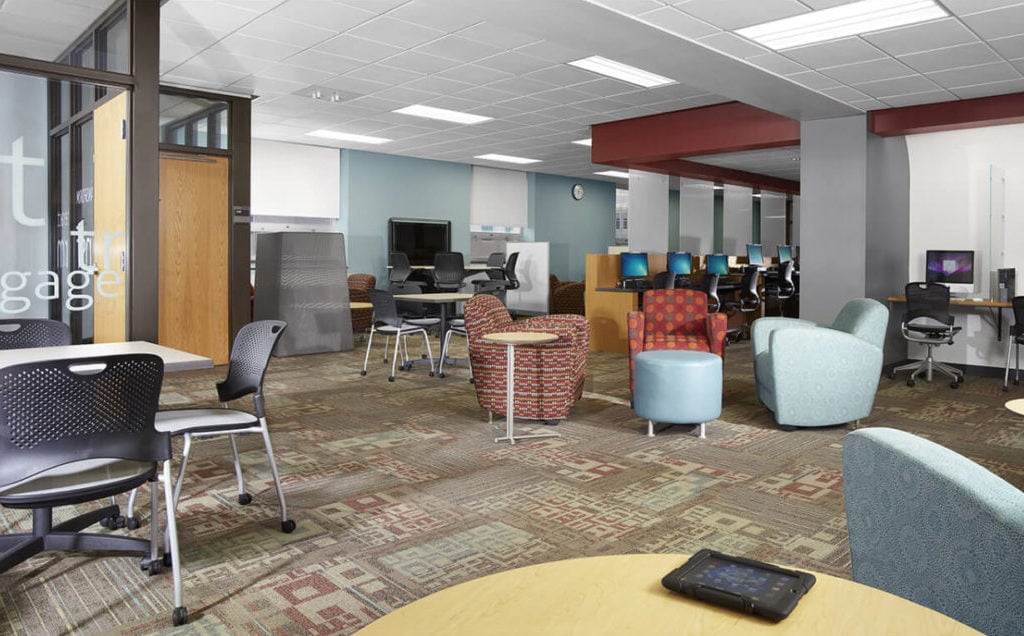The Link Between Architecture and Productivity.
The interior and exterior aesthetics are fundamental aspects of the architectural process. But it's becoming increasingly apparent that they also have a powerful effect on our cognitive and physical functionality. In other words, if you work in a bland, uninspiring environment with second-rate views and a cold visual feel, you won't be nearly as productive as you could be. And you probably won't be very happy either.This Isn't Pseudoscience.
While your campus is a learning environment, it's also a workplace for faculty, staff, administrators—and even students. There is solid evidence to back up claims of higher productivity not only for learning, but for day-to-day work. For example, a report from the World Green Building Council noted that “Longer distance views, away from computer screens or written documents […] reduce(s) fatigue, headaches and the effects of eye strain in the long term. Views also have a positive impact on wellbeing, in part by providing a psychological connection with other groups of people while in a safe space.” The same report also acknowledged that healthy offices have colors, textures, and materials that are welcoming, calming and evoke nature. That's because “Visual appeal is a major factor in workplace satisfaction.”

What Does a More Productive School Look Like?
A well-thought-out campus should offer a variety of different spaces in which people can work. And these spaces should be paired with a culture that supports their working in different spaces when they feel it’s useful. Having the freedom to move around a bit can dramatically increase mood and productivity. More Inspiring Spaces It may also be worth your time to consider how the interiors of your spaces are designed. Are they dull? Do the wall colors reflect your branding? Are you using plants to bring a sense of the outside, inside? It's good for productivity to go beyond the basics of what people need, and start thinking about what makes them feel more creative, inspired and engaged. Whether that’s a splash of color or simply more comfortable seating options. Encouraging Health and Fitness with Design Colleges and universities usually lend themselves naturally to sedentary behavior. Equipping yours with amenities such as bicycle parking and showers will encourage people to walk, run and cycle more. You'll be surprised how much productivity and morale increases after making improvements such as these.






